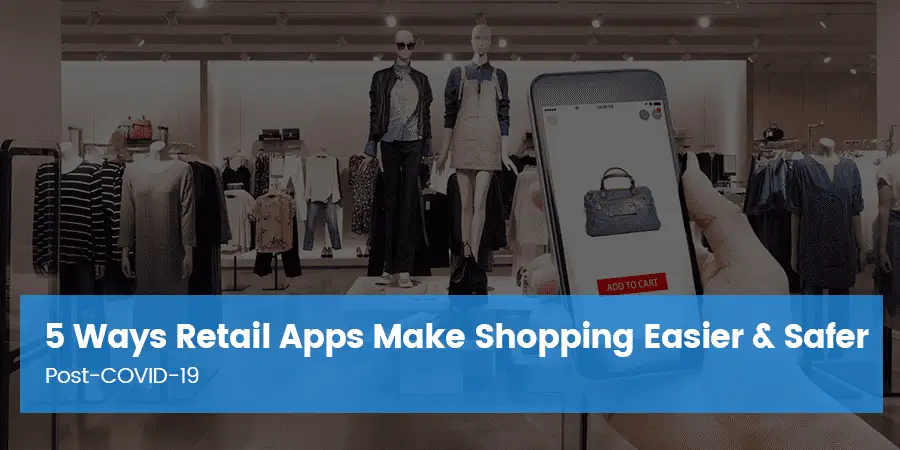The coronavirus pandemic introduced a string of new words such as social distancing, quarantine, remote work, and even noun-verbs like Zoom into our everyday language.
But if there was one word that captured the pandemic’s effects and our collective response to them, it has to be ‘new normal’.
The phrase also signified that the changes caused by the pandemic are here to stay and people and businesses would have to work around them.
Among the latter, it was retail that bore the brunt of this new normal way of things. Already facing a digital transformation challenge, retail businesses now had to contend with a double whammy because of the pandemic.
A Novel COVID-19 Customer Persona?
And while lockdowns and shelter-at-place orders did their bit in making things difficult for retail businesses, the real challenge was thrown up by a seismic shift in consumer behaviour.
Sample this, a Bazaarvoice study found that 62% of American shoppers are buying more online now than they did before COVID-19. Now you know why US retailers reported online sales to the tune of $861 billion in 2020, compared to $598 billion in 2019.
More importantly, this spike is unlikely to be a one-time thing as consumers are not just hooked to the digital experience but are also open to trying out newer brands that offer better value of money.
This means a low price and good product alone are not enough to tilt the balance in your favour. So, what gives?
The answer lies in customer experience.
The new customer persona that emerged out of COVID-19 considers a great experience an important influence on their buying decision, as this study by PWC shows with 73% of respondents confirming the same.
This shift in consumer preferences and the growth of ecommerce, as such, make it non-negotiable for retail businesses to invest in personalized, memorable customer experiences wrapped in a digital environment.
Cue, mobile apps.
Read more: How Mobile Apps Can Help Tech Startups Tide Over Covid-19?
5 Ways Mobile Apps Help You Cater to this New Customer Persona
Regardless of which industry or niche you operate in, a mobile application is still your best bet at interacting with your target audience in a highly customizable and personalized manner, ultimately leading to better customer experiences.
And contrary to received wisdom, retail businesses in both the online and offline world can benefit from such a mobile application.
Here are five ways in which mobile app development services can help your retail business grow in the ‘new normal’ of the post-COVID era.
1) Augmented Reality and Virtual Reality – Bridge the ‘touch and feel’ Gap
The closure of non-essential retail businesses during the lockdown robbed them of their strongest suit – the customer’s ability to touch and feel a product before buying.
But augmented reality and virtual reality have bridged this gap in customer experience by enabling brands to offer a virtual way of experiencing their products.
For instance, L’Oreal’s Style My Hair app uses AR technology to help a customer try out various hair colours and styles virtually.
The company also offers a similar makeup app to enable customers to see what a particular product looks like on their face. Sephora, an upstart online brand popular with young adults, also uses AR and VR to a similar effect.
This ability of AR and VR to substitute in-store experience and advice can help retailers adjust to changing consumer habits while also ensuring in-store COVID-19 protocols and business continuity.
2) AI and ML-enabled Chatbots – Be Proactive in Your Customer Communication
Did you know that a majority of your customers might be open to self-service to find answers to their questions and problems, as borne out by a MarTech story where retailers reported an 86% rise in self-support use by customers between March and May 2020.
While a lot of websites have implemented chatbot-driven self-service, the proportion of mobile apps that use chatbots is dismally low.
This has to change for the better if retailers want to be proactive in their communication as customers show a greater preference for service through instant messaging, interactive guides, adaptive FAQs etc.
Combine that with ancillary features such as offering better suggestions, special access previews, and a more personalized user experience and it becomes a no-brainer for retailers to have chatbots as part of their post-COVID-19 growth strategy.
Read more: 7 Ways to Improve Your Ecommerce Store During Covid-19
3) Omnichannel Presence – Be Wherever Your Customer Wants You to Be
As the pandemic subsides and retail stores open, consumer willingness to shop at brick and mortar stores might not immediately go back to pre-COVID levels. This is where the value of an omnichannel presence for retailers shines through.
For instance, it allows your customers to switch between online and offline versions of your retail store in a seamless manner. This can help them choose and pay for a product online while picking it up from your store or vice versa.
While most retail businesses do invest in multi-channel (blog, Facebook, Twitter, YouTube etc.) experiences today, investing in an omnichannel setup can help them unlock a higher level of customer experience.
There’s no better example of this than IKEA. The Swedish furniture retailer offers a mobile app that is indistinguishable from its physical stores in terms of layout, product placement, and pricing.
In the store, an IKEA customer can use the company’s app as a live, interactive store map to locate their desired product, create wish lists, pay online, confirm stock availability, and even enjoy special offers.
That a large section of retailers has caught onto the importance of omnichannel experience is evident from this PwC report confirming a four-fold increase in the number of businesses investing in such a setup in 2020.
4) Beacons – Socially Distanced Marketing
Beacon technology is another area that got a boost because of the pandemic. It’s also sector-agnostic and can be deployed for mobile apps from industries as diverse as health, hospitality, and of course, retail.
To understand how they work in a retail setup, consider a store where Bluetooth-enabled beacons are installed at different locations.
When a customer who uses the store’s app walks by a beacon, they receive a push notification about a sale, new product, or any other benefit.
Apart from their marketing potential, beacons can also help you learn more about your customers’ behaviour and buying patterns. For instance, which aisle do they spend the most time in?
This data can then be used to push notifications via your store’s app to a customer’s phone, enticing them into purchasing that or a related product at a later date.
Leroy Merlin, the DIY retailer, has been using beacon technology successfully since 2015, a time when the market for this tech was a shade under $500 million. By 2026, this is projected to hit $56 billion.
5) 100% Online Payment Options – Socially Distanced Payments
As consumers make their way back to physical stores again, they’re unlikely to let go of certain preferences from their pandemic online shopping days. Fully online and contactless payment options is one of them.
Stats bear this out too as a survey by Shekel of shoppers between the ages of 18 and 60 showed that 87% said they’d prefer to buy from stores that offered a contactless or self-checkout payment option.
Retailers too are coming to terms that this change in consumer behaviour is long-term. Walmart is a great example of this as the company is testing cashier-less stores for faster, smoother, and safer checkouts.
While Walmart also offers its own wallet app to make payments and checkouts smoother, smaller stores can hire dedicated developer or tie-up with third-party payments solution providers for contactless payment methods such as scannable QR code, e-wallets, and even cryptocurrencies.
Read more: Digital Transformation – The Key to Better Customer Experience
Over to You
While COVID-19 forced all businesses to reorient, none has felt the pressure harder than the retail sector. Now as the world slowly comes out of the pandemic, a lot of new consumer trends are emerging.
The main differentiator though remains customer experience. A mobile app that harnesses one or more of the features discussed in this post can help you mould these emerging trends into an engaging customer experience for your retail business.
Are you ready to steer your retail business through the challenges and opportunities of the post-COVID world? As a custom mobile app development company, we’d be happy to help you with this journey.
Thank you for reading! If you liked this post, do subscribe to get informative posts about web and mobile development, data analytics, and eCommerce delivered to your inbox.

Digital Marketing Manager
Responsible for developing and managing web presence, Sarah has been associated with eLuminous Technologies for 7+ years. Strategic and innovative with a passion for Content Marketing and enhancing brand awareness. Administered all business marketing operations and advertisement campaigns that eventually increased web traffic. She works under the motto “Think like a Publisher, not a Marketer.”



